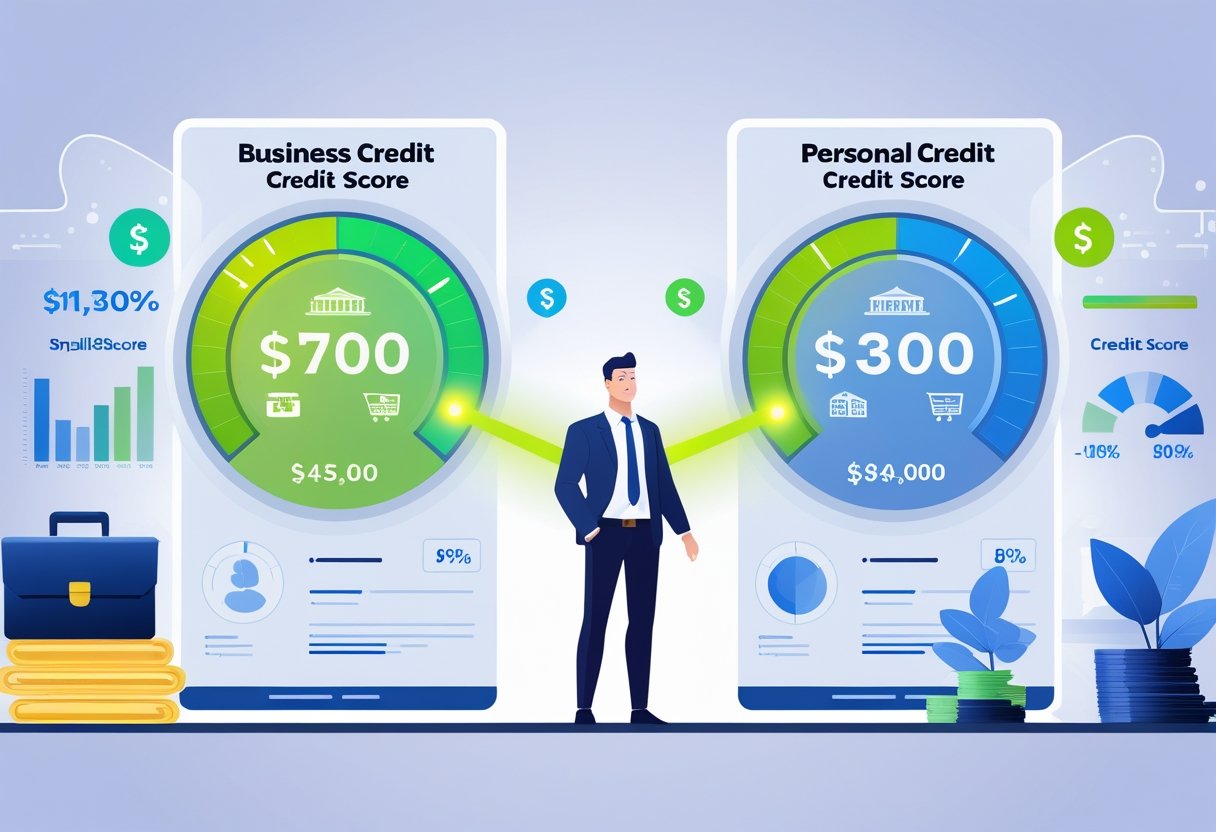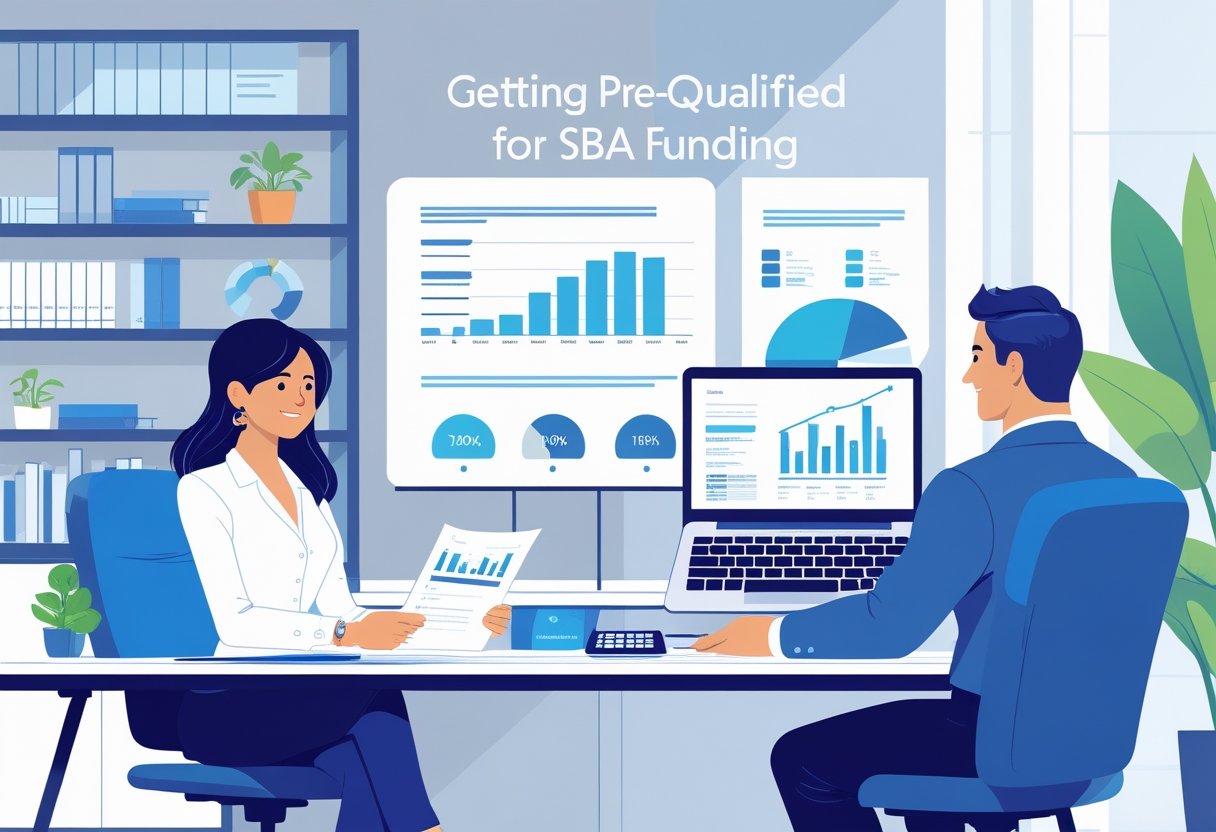
When To Consider Refinancing Your SBA Loan For Better Terms
Refinancing your SBA loan can be a strategic move that gives you the financial flexibility needed to achieve your business goals. You should consider refinancing when market conditions improve, allowing you to secure a lower interest rate, or when your current loan terms no longer align with your financial strategy. This decision can ultimately lead to reduced monthly payments and enhanced cash flow, which are crucial for sustaining and growing your business.
As a business owner, it’s important to thoroughly evaluate your options and understand the potential benefits of refinancing. Key factors to consider include the impact on your credit, the costs associated with refinancing, and whether the new terms will better suit your long-term objectives. By choosing the right time to refinance, you can take control of your financial landscape more effectively.
At SBA Central, you have access to the #1 SBA Resource Library on the Internet, providing essential tools, information, and expert consulting. We bring together extensive experience in staffing solutions and SBA loan consulting, ensuring you make informed decisions tailored to your needs.
Key Reasons to Consider Refinancing Your SBA Loan
Refinancing your SBA loan can lead to significant benefits that directly impact your financial health. Understanding specific reasons for refinancing can help you make informed decisions that enhance your business's financial flexibility.
Reducing Monthly Payments
One of the primary reasons to refinance an SBA loan is to reduce your monthly payments. If your business is experiencing cash flow challenges, lower payments can ease financial strain and free up funds for operational costs.
You may secure a longer repayment term through refinancing. This adjustment spreads out the loan amount over a more extended period, resulting in smaller monthly installments.
Before deciding, assess your current situation against the potential savings. This analysis can reveal whether refinancing aligns with your financial goals.
Securing a Lower Interest Rate
Interest rates fluctuate based on market conditions. If you initially secured high rates, refinancing can offer opportunities to lock in lower interest rates. This move can significantly reduce the overall cost of your loan.
When you refinance, explore fixed-rate options for predictable expenses. A fixed rate protects you from future rate increases and adds stability to your financial planning.
By obtaining a lower interest rate, you retain more profits, helping you grow your business without the burden of high-interest payments.
Accessing Additional Working Capital
Refinancing isn’t solely about lower payments or interest rates. It may also allow access to additional working capital. If your business has expanded or you require funds for new projects, refinancing your SBA loan can enable you to borrow more.
By rolling existing debt into a new loan, you can often negotiate better terms. This strategy could include extra funds to invest in growth opportunities, equipment, or marketing.
At SBA Central, we provide tools and resources tailored for your refinancing needs. As the #1 SBA Resource Library on the Internet, our expertise in business financing ensures you navigate these decisions effectively.
Eligibility Criteria and Timing for SBA Loan Refinancing
Refinancing your SBA loan can offer significant benefits, but it's essential to understand the timing and eligibility requirements. Knowing when to act and the specific criteria can help you navigate your refinancing journey effectively.
When Is the Right Time to Refinance?
Consider refinancing when interest rates drop significantly below your current loan rate. This can lead to lower monthly payments and substantial savings over time. If you're facing cash flow issues, refinancing can also ease financial pressures by extending loan terms or consolidating debts.
Additional triggers for refinancing include changes in your credit score or financial situation. If you've improved your creditworthiness, you might qualify for better loan terms. Furthermore, refinancing may be suitable if your current loan terms restrict your business’s growth.
Typical Eligibility Requirements
To qualify for SBA loan refinancing, you must meet specific criteria set by the Small Business Administration. Generally, you’ll need to demonstrate:
- A solid repayment history
- Sufficient cash flow to cover new loan payments
- A proven ability to support the original loan amount
Eligibility may also include limits on existing debt levels and a need for the refinancing to benefit your business. Understanding these requirements is crucial as they can vary significantly based on the SBA loan type and lender policies.
Signs Your Current SBA Loan Needs Refinancing
You should consider refinancing if you're struggling with high monthly payments or unfavorable loan conditions. Indicators include increased financial strain due to interest rates that exceed market trends.
Another sign is if your business needs more capital but is limited by your existing loan structure. Access to additional funds through refinancing can facilitate growth opportunities. You may also recognize that your current loan does not align with your evolving business objectives; refinancing could provide a fresh start that complements your needs.
For personalized guidance and to explore options, consult with experts at SBA Central, the #1 SBA Resource Library on the Internet. Our services streamline the refinancing process, combining industry expertise with specialized tools to support your small business.
Understanding SBA Refinancing Options
Exploring refinancing options for your SBA loan can significantly enhance your business's financial position. You may choose between refinancing with an SBA 7(a) loan, an SBA 504 loan, or alternative lenders. Each option has specific advantages tailored to different business needs.
SBA 7(a) Loan Refinancing
The SBA 7(a) loan is known for its flexibility, making it a popular choice for refinancing. With this option, you can consolidate existing debts or acquire additional working capital.
Key features include:
- Loan Amounts: You can borrow up to $5 million.
- Repayment Terms: Typically range from 10 to 25 years, depending on the use of proceeds.
- Eligibility: Must maintain a strong credit history and demonstrate the ability to repay.
Refinancing with a 7(a) loan allows you to negotiate better interest rates and improve cash flow. For more details, check out Refinance SBA Loan: When It Makes Sense.
SBA 504 Loan Refinance
The SBA 504 loan refinancing program is designed for long-term financing needs, especially for real estate and large equipment purchases. It can convert existing loans into more manageable debt.
Important aspects include:
- Loan Amounts: Up to $5 million for regular businesses and more for specific sectors.
- Interest Rates: Typically lower than conventional loans.
- Eligibility Criteria: Your existing loan must be at least two years old, and you should demonstrate a solid repayment history.
The 504 program helps improve cash flow and reduces financial strain, making it suitable for stable businesses looking to expand. Learn more about qualifications here.
Alternative Lenders and Private Loan Options
If traditional SBA refinancing doesn't suit your needs, consider alternative lenders or private loan options. These can provide faster access to funds and more flexible terms.
Consider the following:
- Speed: Approvals are quicker than traditional banks.
- Flexibility: Loan conditions can be tailored to your business requirements.
- Potential Costs: Keep an eye on interest rates, which may be higher than conventional loans.
While alternative lending can bridge gaps, it's essential to evaluate the overall cost. For expert guidance on navigating these options, contact SBA Central, your go-to hub for SBA-related services.
Evaluating Benefits and Drawbacks of SBA Loan Refinancing
When considering refinancing your SBA loan, it's essential to weigh the benefits against the potential drawbacks. Understanding these factors can help you make an informed decision that aligns with your financial goals.
Pros of Refinancing an SBA Loan
Refinancing an SBA loan offers several advantages that can significantly impact your business. First, you may secure lower interest rates, which can reduce your monthly payments. This can free up cash flow, allowing you to invest in other areas of your business.
Additionally, longer repayment terms can help ease financial pressure. By spreading payments over an extended period, you can manage your cash flow more effectively. Furthermore, consolidating existing debts into a single loan simplifies repayment and potentially improves your credit profile.
It's also worth noting that refinancing can provide access to better lender terms. You may find new lenders offering improved conditions, enhancing your overall financing strategy. For comprehensive resources related to SBA loans, consider SBA Central, the #1 SBA Resource Library on the Internet.
Potential Drawbacks and Risks
Despite the benefits, refinancing an SBA loan may come with risks that you should consider. One primary concern is the potential for fees and costs associated with refinancing. These can include closing costs, application fees, and other charges that could offset any savings you anticipate.
Additionally, while lower payments can be tempting, extending the loan term might result in more interest paid over time. This could ultimately increase the total cost of your loan.
Another factor is qualifying for new financing terms. If your business's financial situation has changed since your original loan, you might encounter stricter lending criteria when attempting to refinance.
Understanding these drawbacks is crucial. For expert guidance on navigating the complexities of SBA loan management, explore the resources available at SBA Central.
Steps to Refinance Your SBA Loan Successfully
Refinancing your SBA loan involves careful planning and evaluation. Understanding your current terms, comparing new offers, and preparing necessary documentation are key steps in this process. Each will help you make informed decisions and ensure a smooth refinancing experience.
Reviewing Your Current Loan Terms
Start by gathering your existing loan documents. Review the interest rate, repayment term, and any fees associated with your current loan.
Key areas to focus on include:
- Interest Rate: Determine if your rate is competitive compared to current market rates.
- Fees: Check for prepayment penalties, which can affect your decision to refinance.
- Repayment Schedule: Understand how current payments fit into your cash flow.
Assessing these factors will guide your decision to move forward or explore other financing options.
Comparing New Loan Offers
Once you understand your current loan, research potential new offers. Different lenders may provide various terms and rates.
- Interest Rates: Look for lower rates that can reduce your monthly payments.
- Loan Terms: A longer term might lower payments but increase total interest paid.
- Fees: Compare application, origination, and closing costs among lenders.
Using a table to compare offers can clarify your options. At SBA Central, our resources help you analyze these offers effectively, ensuring you make the best choice for your business financing needs.
Preparing Required Documentation
Lenders will require documentation for refinancing. Collect the necessary items to streamline the process.
Documents typically needed include:
- IRS tax returns for the past two years.
- Financial statements: Balance sheets, income statements, and cash flow statements.
- Business plan and projections, which may be necessary for some lenders.
Ensure all documentation is accurate and organized. Having these ready speeds up processing and enhances your credibility as a borrower. SBA Central provides guidance on preparing these documents, making your refinancing journey easier and more successful.
Frequently Asked Questions
Refinancing an SBA loan involves navigating specific criteria and processes. Understanding the nuances can help you determine the best approach for your business needs.
What are the eligibility requirements for refinancing an SBA 7(a) loan?
To refinance an SBA 7(a) loan, you generally need to demonstrate solid creditworthiness, a consistent revenue stream, and a sound business plan. Additionally, the loan must still meet SBA guidelines for refinancing, including maintaining the original use of loan proceeds and ensuring you are up to date on payments.
Under what conditions can you refinance an SBA loan with a conventional loan?
You can consider refinancing your SBA loan with a conventional loan if market conditions present lower interest rates or if better loan terms are available. It is crucial to ensure that cash flow and repayment ability are sufficient under the new loan's terms.
Is it possible to refinance an existing SBA loan with another SBA loan?
Yes, you can refinance an existing SBA loan with another SBA loan, but specific conditions apply. The refinancing must serve a legitimate business purpose, and you should meet eligibility criteria set by the SBA.
What are the latest SBA rules and regulations regarding loan refinancing?
Current SBA rules stipulate that borrowers must comply with specific conditions in terms of loan purpose and payment history. Keeping updated with SBA Central ensures you are aware of any changes to these regulations that may impact your refinancing options.
How does refinancing an SBA loan affect the terms and interest rates compared to the original loan?
Refinancing often allows you to secure better terms or lower interest rates than your existing SBA loan. The specific changes will depend on market conditions and your financial profile at the time of refinancing.
What is the process to follow for refinancing an SBA 7(a) loan?
The process typically involves assessing your current financial status, researching potential lenders, and submitting an application that details your refinancing goals. Documentation will include financial statements, business plans, and proof of income to support your request effectively.
For comprehensive assistance with your SBA services, turn to SBA Central, the #1 SBA Resource Library on the Internet. We offer a unique blend of tools, information, and consulting expertise to guide you through your SBA loan journey.


